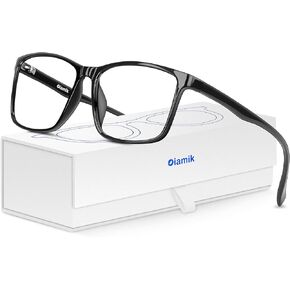- Shopping, made easy.
- /
- Get the app!
The VanGuard 1320BRI Siedentopf Binocular Compound Microscope has a pair of 10x widefield high-eyepoint eyepieces, a reverse-mounted nosepiece with four DIN infinity plan achromatic objectives, Kohler halogen illumination, nested coarse and fine focus, a 1.25 NA Abbe condenser with iris diaphragm and blue filter, and a mechanical stage. The Siedentopf binocular head has a pair of eyepieces with interpupillary adjustment, a fixed inclination to reduce eye and neck strain, and rotation capability to provide a more comprehensive view and enable sharing. A Siedentopf binocular head enables the viewer to change the interpupillary distance without changing the tube length, eliminating the need to refocus the image. High-eyepoint eyepieces ease viewing for viewers wearing glasses. Dioptric adjustment accommodates individual eye-strength differences. Infinity plan objectives provide focus over the entire range of the viewing field, and a longer working distance for improved focus when auxiliary components are utilized. Achromatic objectives provide color correction of magnified images. A reverse-mounted nosepiece keeps objectives out of the way to prevent damage and contamination, and to enable more secure slide handling. A compound microscope is used for inspection and dissection of specimens when two-dimensional images are desired.
The microscope has lower (diascopic) brightfield, Kohler illumination that transmits light up through the specimen for enhanced visibility of translucent and transparent objects. Brightfield (BF) illumination allows the specimen to absorb light, resulting in a dark image on a light background. Kohler illumination focuses and centers the light path using two iris diaphragms, providing optimum contrast and resolution. The halogen light source provides bright light in a concentrated path, and a rheostat controls the amount of light emanating from the lamp. It has an Abbe condenser that can be adjusted to control the distance of the light from the stage, an iris diaphragm to optimize the amount of light illuminating the specimen, and a blue filter to help naturalize the light. The condenser is controlled using a rack-and-pinion mechanism. The mechanical stage locks the slide into place and provides precise slide manipulation along the X- and Y-axes. Coaxial coarse and fine focus knobs are nested to speed focusing for left-and right-handed viewers, and tension adjustment ensures specimen stays focused during viewing. The frame has a stain-resistant enamel finish.
Microscope Head and Optics SpecificationsHeadBinocular, SiedentopfMagnification range40x-1000xHead inclination30 degreesInterpupillary adjustment55 to 75mmEyepieces (20mm)WF10xNosepieceQuadruple, reverse-mountedObjectives, DIN infinity plan achromatic4x, 10x, 40x, 100x
Microscope Illumination and Stage SpecificationsFocus typeCoaxial nested coarse and fineFocus travel range40mmCondenser1.25 NA AbbeLight sourceHalogen with rheostat, 20WDiaphragmIrisIllumination typeBrightfield, KohlerStage typeMechanicalStage dimensions160 x 140mm (W x D)Stage travel range75 x 50mm (X-direction x Y-direction)Power110V
W is width, the horizontal distance from left to right; D is depth, the horizontal distance from front to back.
Microscopes are instruments used to enhance the resolution of an object or image. Types include compound, stereo, or digital. Compound microscopes use a compound optical system with an objective lens and an eyepiece. Stereo microscopes show object depth in a three-dimensional image. Digital microscopes are used to display an image on a monitor, rather than looking through a lens. Microscopes can have monocular (one), binocular (two), or trinocular (three) eyepieces, with varying magnification abilities. Magnification ability refers to the size of an image. Resolution, also known as resolvant power, refers to the clarity of the image. The interaction between field of view (FOV), numerical aperture (NA), and working distance (WD) determines resolution. Microscopes can control magnification through a fixed focus, or through a range of adjustments. They can also utilize LED, fluorescent, and mirror light sources to help control viewing capabilities. Microscopes are widely used in education, lab research, biology, metallurgy, engineering, chemistry, manufacturing, and in the medical, forensic science, and veterinary industries.
Vee Gee Scientific manufactures laboratory equipment and supplies, and makes the VanGuard brand of products. The company, founded in 1981, is headquartered in Kirkland, WA.
What's in the Box?VanGuard 1321BRI Siedentopf Binocular Compound Microscope
(2) WF10x eyepieces, 20mm
4x DIN infinity plan achromatic objective
10x DIN infinity plan achromatic objective
40x DIN infinity plan achromatic objective
100x DIN infinity plan achromatic objective
Clear diffusing filter
Blue filter
Spare bulb
Spare fuse
Dust cover
Instructions
 OIAMIK Jewelry Cleaner Ultrasonic Machine: Portable Professional 10 Min Timer Sonic Jewelry Cleaner Machine for Glasses, Eyeglasses, Jewelry, Rings, Watch, Coin, (with Blue Light Glasses
KWD 8.500
OIAMIK Jewelry Cleaner Ultrasonic Machine: Portable Professional 10 Min Timer Sonic Jewelry Cleaner Machine for Glasses, Eyeglasses, Jewelry, Rings, Watch, Coin, (with Blue Light Glasses
KWD 8.500
 -6%
Desktop Electric Lab Laboratory Centrifuge Machine Lab Medical Practice w/Timer and Speed Control - Low Speed,4000 RPM, Capacity 20 ML x 6-110v by CALU LUKY
KWD 25.500
-6%
Desktop Electric Lab Laboratory Centrifuge Machine Lab Medical Practice w/Timer and Speed Control - Low Speed,4000 RPM, Capacity 20 ML x 6-110v by CALU LUKY
KWD 25.500
 HIBLOW HP-80-0117 Septic Linear Air Pump with Brass Barb
KWD 105.500
HIBLOW HP-80-0117 Septic Linear Air Pump with Brass Barb
KWD 105.500
 Eye Dropper for Essential Oils 20 PCS - Pipettes Dropper with Black Rubber Head, Straight-Tip Calibrated Thick Glass Medicine Dropping Pipettes for Accurate Easy Dose and Measurement 1 mL Capacity
KWD 4
Eye Dropper for Essential Oils 20 PCS - Pipettes Dropper with Black Rubber Head, Straight-Tip Calibrated Thick Glass Medicine Dropping Pipettes for Accurate Easy Dose and Measurement 1 mL Capacity
KWD 4